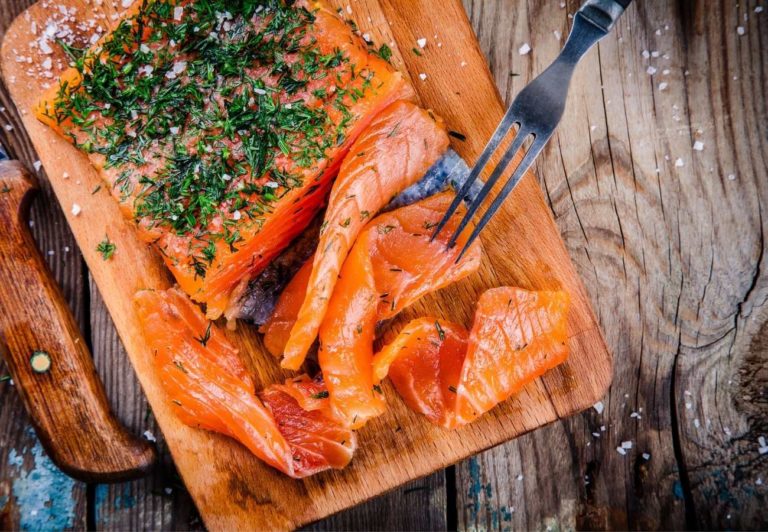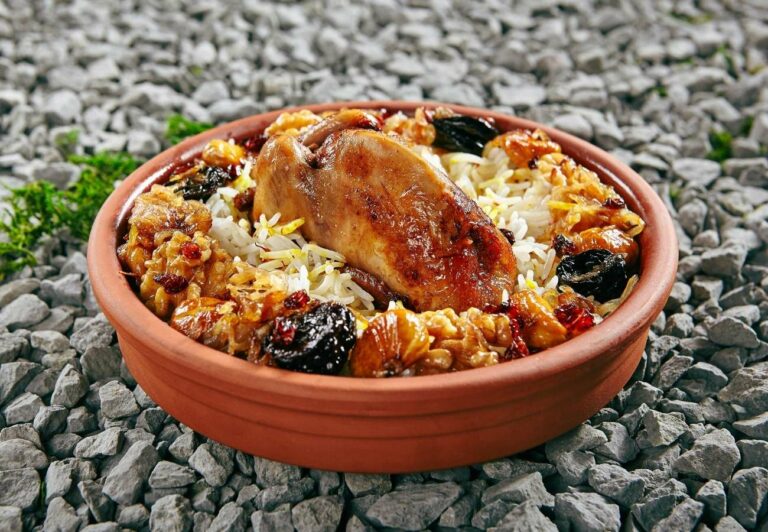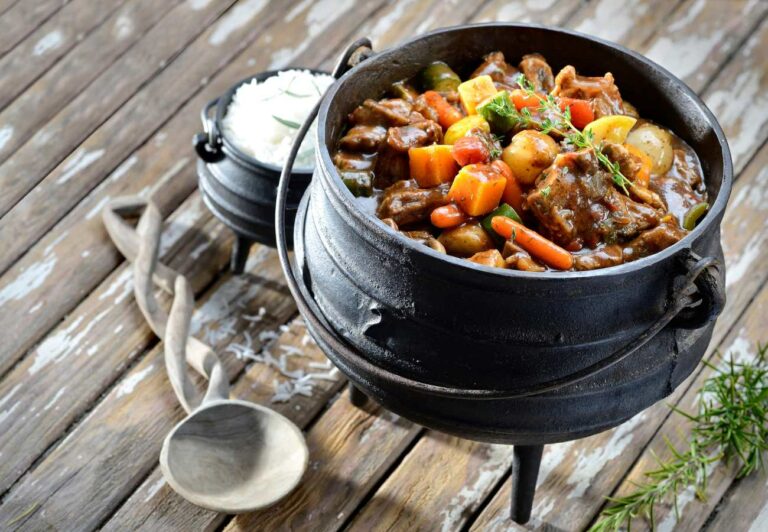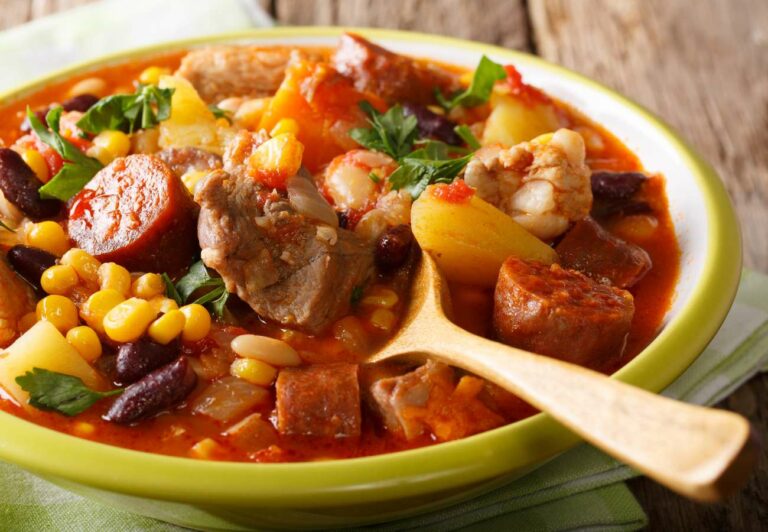Polish Food: 21 Traditional Dishes of Poland
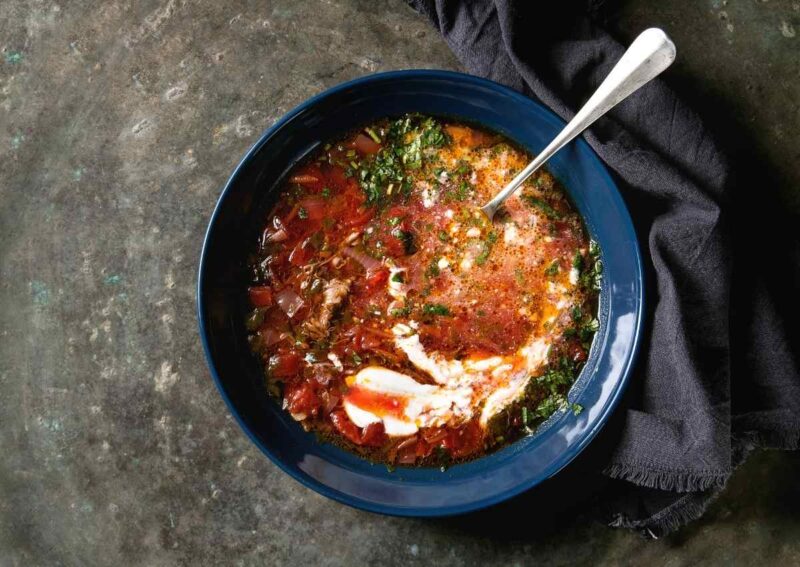
Poland has one of the highest meat consumption in the world. Pork, in particular, is popular in Poland. Goose breeding also has a long tradition and Polish oat-fattened geese are exported worldwide.
There are many lakes and rivers in Poland, which is why fish also plays an important role in Poland’s cuisine. You are likely to come across Polish dishes made with herring, cod and Baltic salmon, which are fried, grilled, boiled, pickled or made into a salad.
Borscht (Barszcz Czerwony)
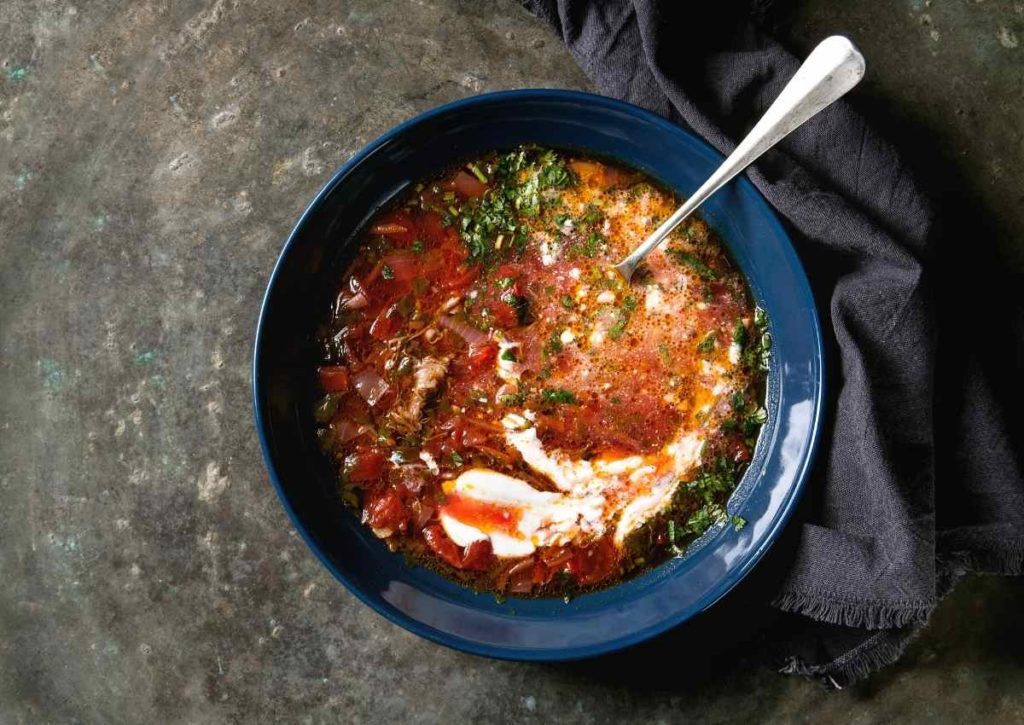
Borscht is a beetroot soup that is usually served at Christmas. This nutritious soup can be served either warm or cold, with ‘uszka’, which means “little ears”.
Uszka are stuffed with meat or cabbage and mushrooms. The recipe for this soup differs from region to region depending on the local traditions. The soup has a rich color and expressive taste.
Pierogi
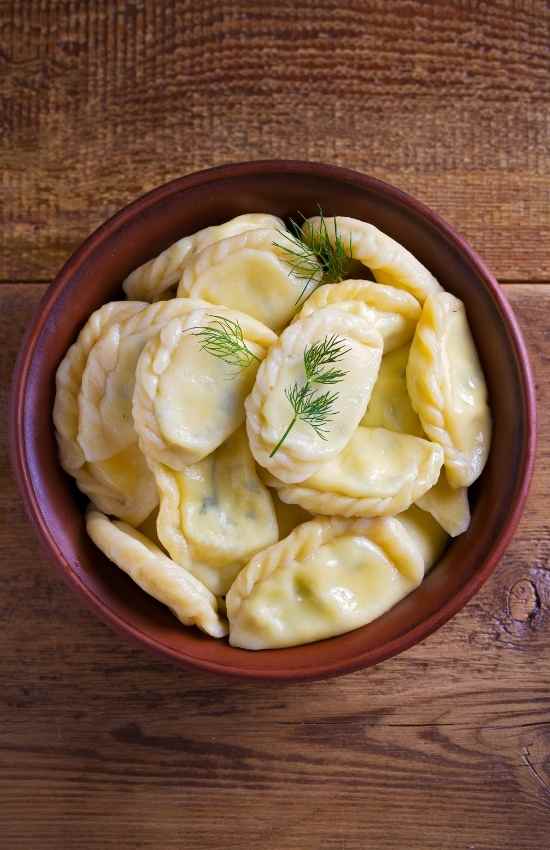
The traditional Polish pierogi is very similar to the Italian ravioli or the Chinese dumplings. It’s a classic on every Polish grandma’s menu. The half-moon shaped dumplings are often stuffed with a wide range of fillings.
The most commonly used fillings are cabbage and mushrooms, potatoes and white cheese, pork or beef. The sweet variant of pierogi is also very common and most often filled with white cheese and raisins or fruit. They are served in almost all restaurants in Poland and in different variations.
Śledzie

“Śledzie” is the literal translation for herring in Polish. The dish, more widely known as “śledzie po Kaszubsku” in Poland, is prepared with pickled herring in combination with sour cream, onions, apples and eggs.
This dish used to be a staple Polish food back in the 13th century. It is best enjoyed with a bottle of red wine and is served cold after chilling in the fridge for about an hour.
Gołąbki

Gołąbki is a dish made from pork or beef and chopped onions, rice and mushrooms wrapped in cabbage leaves. It is then baked or fried before serving and is usually accompanied by spicy tomato sauce.
The word Gołąbki literally translated means “little pigeons” which describes its bird-like shape. Cabbage rolls are usually consumed two or three days after cooking since that’s when they’re believed to taste the best.
Placki Ziemniaczane
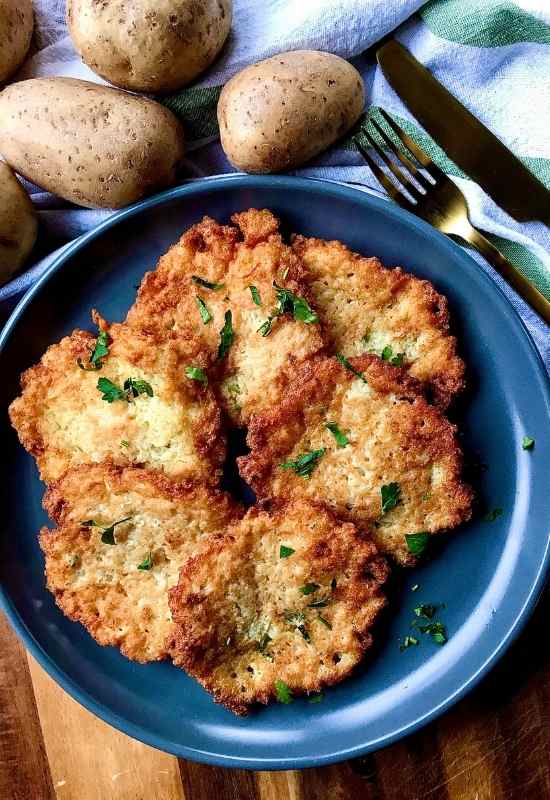
You will find this dish in virtually every Polish restaurant. It’s popular with tourists and locals as a quick and inexpensive meal.
The Placek is made of grated potatoes mixed with onions, spices, eggs and a little flour. It is fried in hot oil and served warm. Finally, it is coated with sour cream or sugar. Another variant of this dish is the so-called “Placek po Zbojnicku ”. This is a potato pancake served with meat, sauce and salad.
Zapiekanka

Zapiekanka is a street food that is often referred to as Polish pizza. It is made from a halved baguette which is roasted in the oven.
There are many variations depending on the ingredients: meat or sausage, mushrooms, peppers, cheese and ketchup on top. It’s a trademark in Kazimierz – the Jewish Quarter in Krakow. It can be found at most train stations or fast food places across the country.
Polish Sausage (Kielbasa)
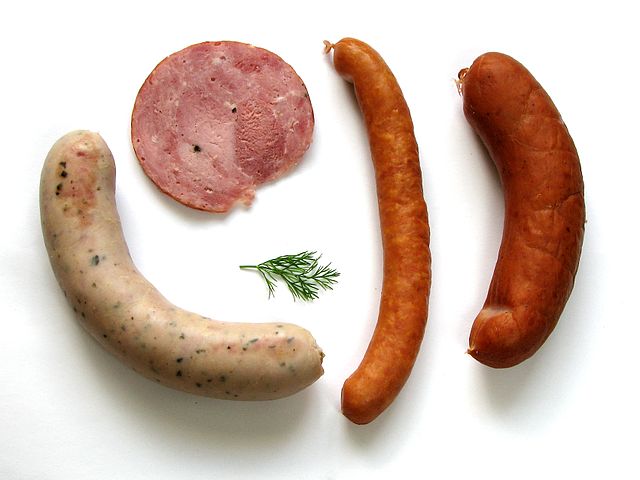
Kielbasa or sausage is a staple of Polish cuisine. It is made from pork, lamb, veal, turkey or chicken. It can come in different shapes and flavors and is popular among tourists as well as locals. The most popular are kabanosy, krakowska and biała .
Kielbasa is very often served at Polish weddings. It is also part of the traditional Easter breakfast and it usually complements other Polish dishes such as żurek, bigos, and leczo.
Kotlet Schabowy
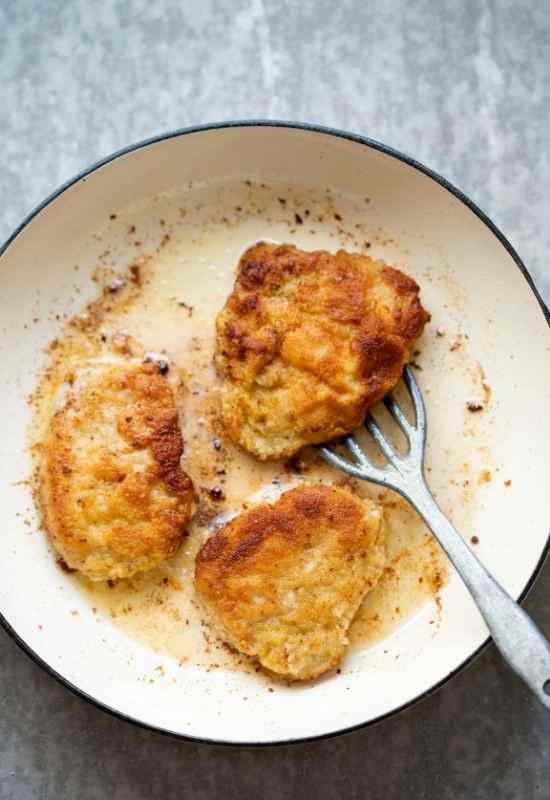
The most famous lunch in Poland is the almighty “Kotlet Schabowy”, which is served with mashed potatoes and salads. It is a breaded cutlet that is very similar to the Wienerschnitzel. If you don’t like pork, there is also a chicken version available.
Zrazy
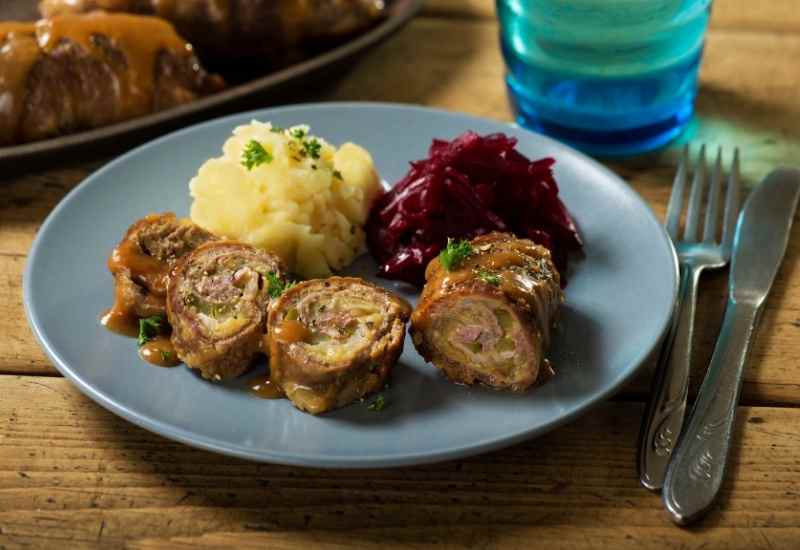
Zrazy is another traditional Polish dish made from beef, veal or game meat. It is stuffed with different fillings – breadcrumbs, mushrooms and cucumber, rolled up, fried in the pan and then braised.
There are several ways to prepare this dish with different fillings. In the past, Zrazy was only intended for nobles. Today, however, you can find it in almost every restaurant these days. It is a must during a culinary trip to Poland.
Makowiec
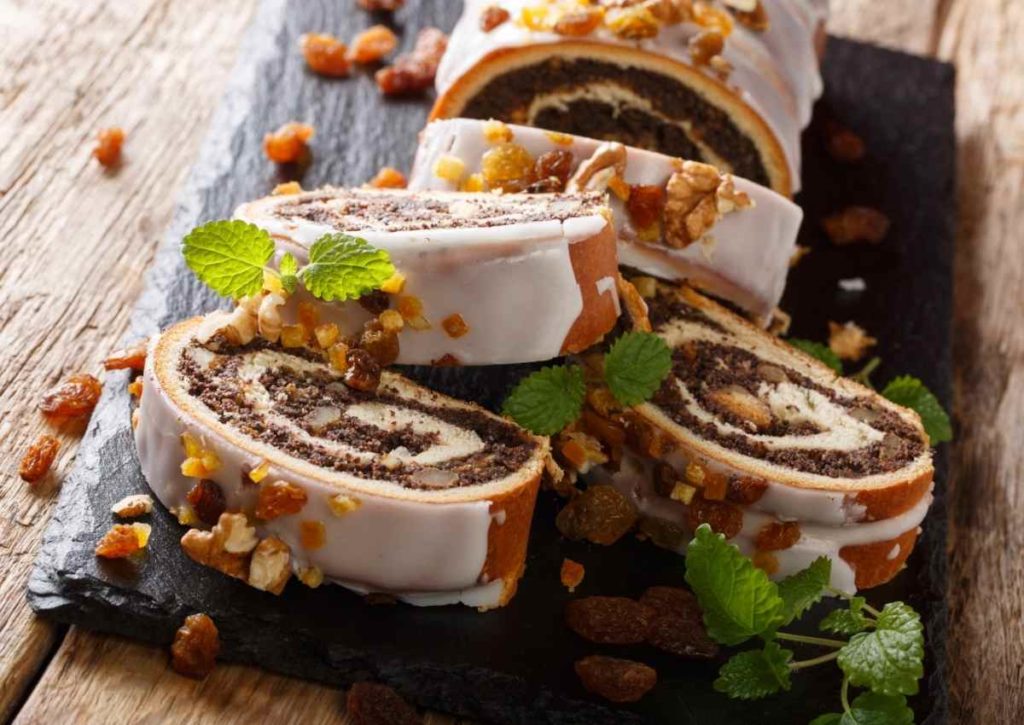
Makowiec is a traditional Christmas dessert made from a yeast dough that is rolled over with a poppy seed filling containing ground poppy seed, butter, sugar, honey, raisins and walnuts.
Whilst typically associated with Christmas, it is also enjoyed year round as an after-dinner dessert.
Mizeria
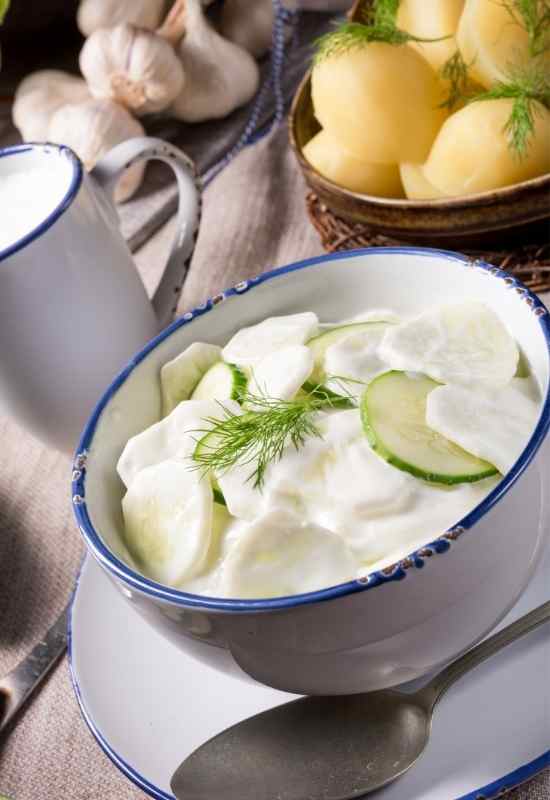
Mizeria is a cold and creamy cucumber salad that is served with meat, rice or potatoes. If you are invited to lunch by a Polish family, you can expect this one as a side dish in most cases.
Sliced, fresh cucumbers with onions, dill, sour cream, vinegar or lemon juice seasoned with a little salt and pepper make a refreshing combination. By the way, did you know that Mizeria (Mi-ser-ia) means misery? The origin of the names is unclear. But it is believed that the name was given just for fun and stuck.
Sernik
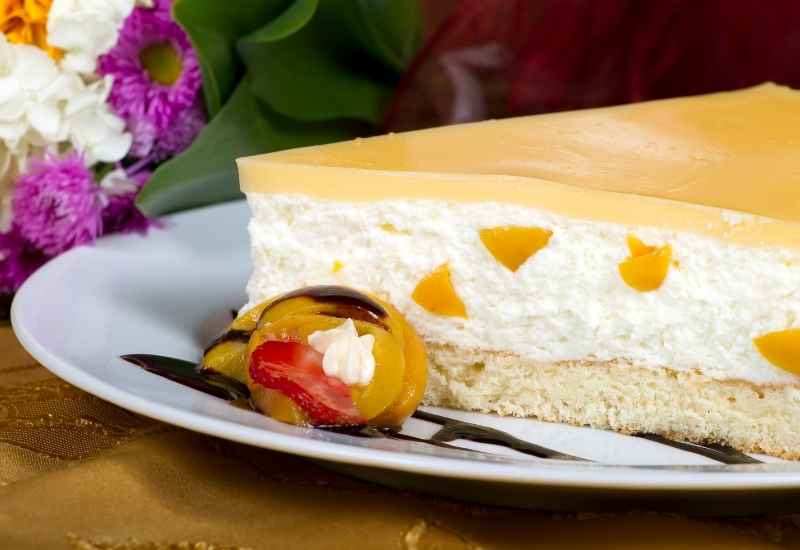
Sernik is a traditional cheesecake made from curd cheese with dried fruits and a chocolate coating. In Poland, it is enjoyed all year round, but especially during Christmas and other celebrations. If you have a sweet tooth, you can enjoy its different flavors on a tour to Poland.
Szarlotka
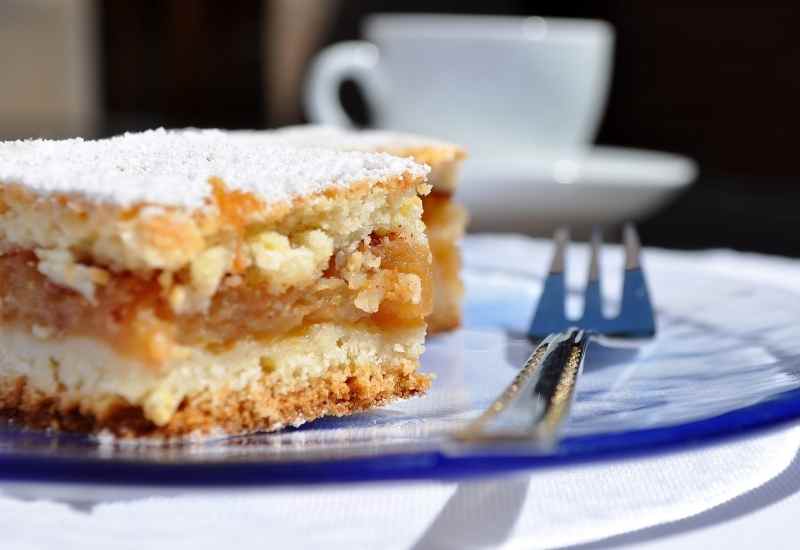
Szarlotka is a hearty dish made of buttery pastry with a pinch of cinnamon. Szarlotka is often served cold or warm with a spoonful of vanilla ice cream or whipped cream. It is one of the most popular desserts and can be enjoyed in the regular cafes and bakeries all over Poland.
Bigos
Bigos, or Hunter’s Stew, is a dish made with meats, mushrooms, and sauerkraut, which are then fried and set to simmer for hours. It is enjoyed in colder months and often made in large batches, as it is well known that the leftovers only get better with time. It is the national dish of Poland and has a long history in the country.
Pączki (Polish Doughnuts)

Pączki are round, deep-fried doughnuts made with basic ingredients such as flour, eggs, sugar and lard and come in a variety of flavors and fillings, ranging from traditional rose jam and plum jam, to contemporary favorites like custard and chocolate.
Kostka Kokosowa
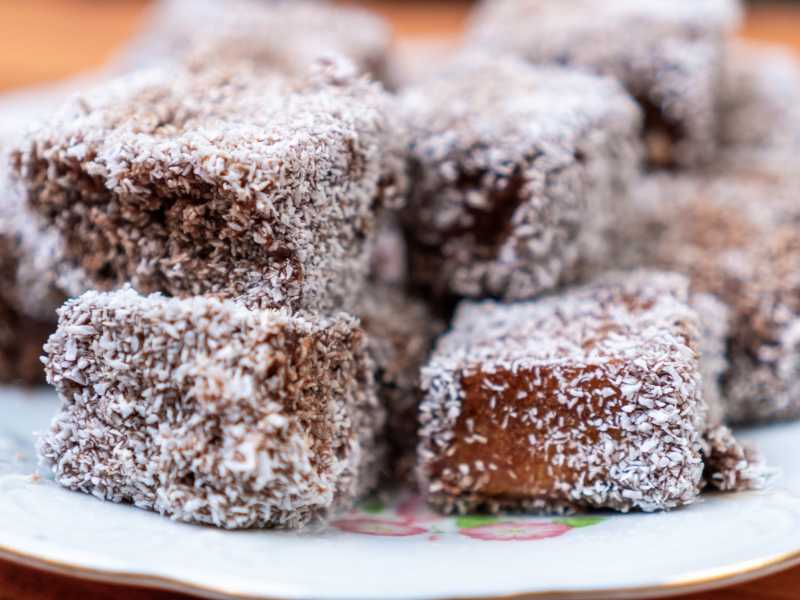
Kostka Kokosowa is a sweet treat consisting of small cube-shaped cakes made of sponge or sponge cake dipped in chocolate and then sprinkled with desiccated coconut. They are particularly popular throughout the Balkan countries where they are known as čupavci and are often made for special occasions such as Christmas, birthdays, weddings and baptisms.
Kopytka
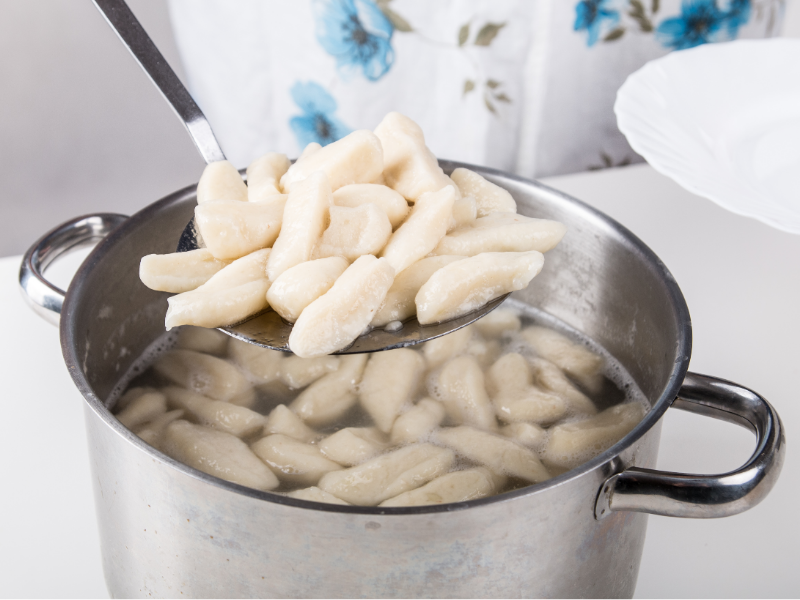
Kopytka are a type of potato dumplings made by mashing potatoes, making them into a dough to shape and boiling. It is often served as a main course with a variety of toppings or sauces, such as breadcrumbs, onions, bacon, gravy or mushroom sauce.
Zupa Pomidorowa

Zupa Pomidorowa is a traditional tomato soup made by simmering tomatoes, onions, carrots, and celery, with broth and seasonings. It is usually made with pasta or egg noodles, although sometimes rice can be used instead.
It is enjoyed throughout the year in Poland, but is especially popular during colder months as a comfort meal. It is commonly made on Mondays in Poland using leftovers from Sunday dinner.
Hamantaschen
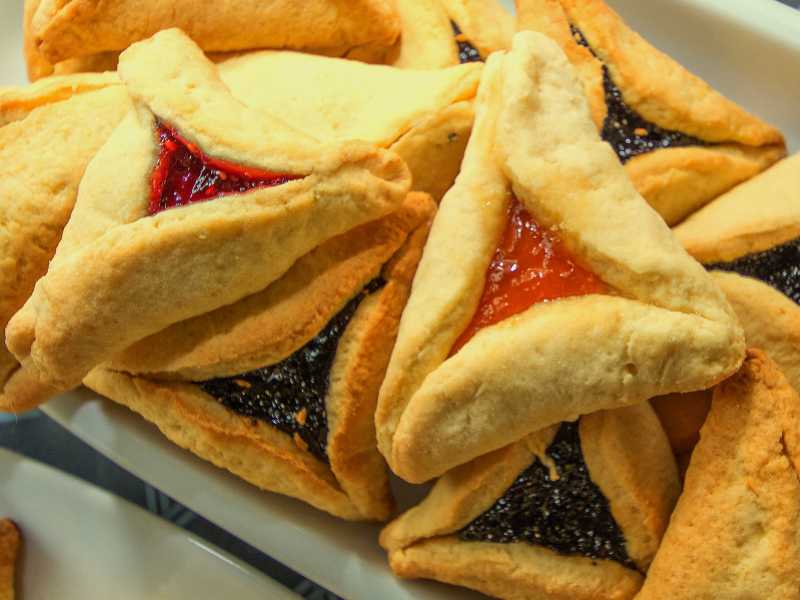
Hamantaschen are a traditional Jewish, triangular shaped pastry consisting of a sweetened dough with a filling. They can have a wide range of fillings, usually sweet, including jams like apricot, strawberry or raspberry, mashed fruit like cherries or apples, spreads like chocolate or nut based.
The traditional fillings are mohn and lekvar. Mohn is a pasty poppy seed filling. Lekvar is a pureed dried fruit filling, usually made with prunes.
Kasha
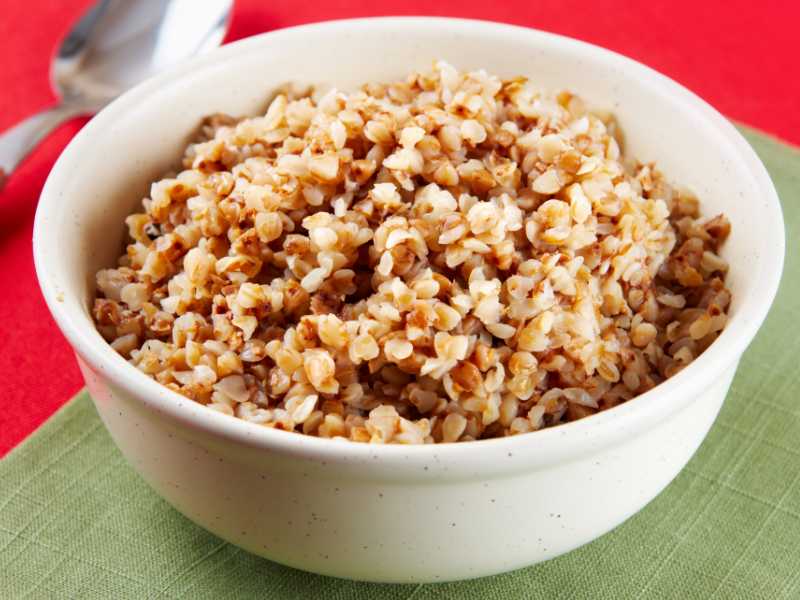
Kasha is a grain that is particularly popular in Eastern Europe, usually made from buckwheat groats. The buckwheat is first toasted then cooked in water or broth until they are tender. They are flavored before eating.
Kasha is used in numerous ways. It is eaten as a main meal when served as a breakfast cereal, topped with hot milk, yogurt, honey and a variety of nuts and berries. It is also served as a side dish and can be used for stuffing meat. It is widely consumed and eaten with meat or added to a variety of dishes like soup.
Goulash

Goulash is a stew of beef and vegetables flavored with paprika spice, popular in many countries throughout Europe. The ingredients are slow cooked until the meat becomes tender. It is eaten as a main meal and sometimes served with noodles or bread.

